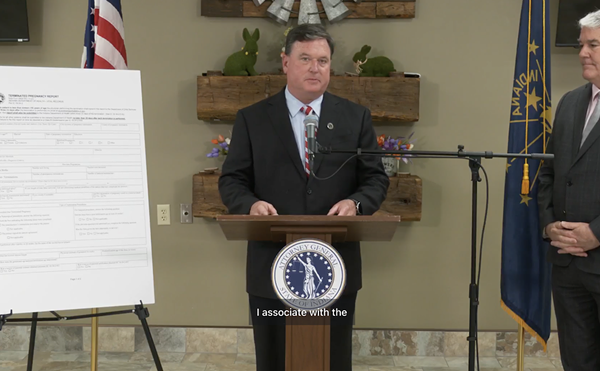|
Collecting rainwater in a barrel was an old-fashioned version of water conservation. The modern equivalent is a roof that drains rainwater into a cistern beneath the building for watering plants on the campus of the University of Cincinnati.
The roof on the new Recreation Center is one of many features of the "building green" elements incorporated into the facility that will help UC save money while being environmentally responsible.
Building green is a new shorthand for designing and constructing or renovating buildings in an environmentally conscientious manner that's cost effective. Until recently, fiscal and environmental responsibility were often considered mutually exclusive.
A long-term approach that takes into account sustainable design, building and maintenance practices proves that businesses that operate a building can save money, conserve natural resources and enhance community development.
Start with brown
If your business is education, it can also help recruit students, according Mary Beth McGrew, director of the University Architect Campus Building Division at UC. At a time when colleges are competing to attract students, respect for the environment is getting attention.
UC has several green buildings on campus. The green factor frequently goes unnoticed by those who are busy looking up the credentials of the architectural firm mOrphosis and Thom Mayne responsible for the look of the rec center.
However, it's an integral part of UC's mission to educate students about its responsibility as a member of the Cincinnati community.
"Most good and progressive institutions of higher education see that it is their responsibility to look at conserving our resources and training the next generation of leaders in whatever way you look at sustainability, to be a piece of that," McGrew says. "Part of UC's belief system is that the campus, as a whole, is part of the educational process. You might not like a specific building, but understanding its design intent or why it is considered a significant piece is as much a part of your community education as whatever program you're studying."
Administrative memo 135, released Jan. 6, commits the university to long-term protection of the environment. Long before "reduce, reuse, recycle" was a formal policy, the building process began using Leadership in Energy and Environmental Design (LEED) as a standard for construction and renovation on campus.
LEED is a green building rating system formulated by the U.S. Green Building Council "to provide a framework for assessing building performance and meeting sustainability goals."
Points are accumulated for different categories, such as water efficiency, energy and atmosphere and materials. These result in ratings such as gold or silver.
UC decided to utilize LEED because it was the best system available and is applying for LEED certification. Chad Edwards, the LEED representative for the architectural firm KZF Design, gets excited when talking about how LEED made a positive impact.
"We recycled as much of the construction debris as possible," he says. "The final numbers aren't in yet, but we're somewhere around 75 percent. That's a pretty significant number. It takes away from the landfill and it helps feed the recycled-content products that are out there. Drywall will get recycled back into drywall. Any scrap of steel can be melted down and put back into another form. If the wood can't be used for construction purposes, it gets recycled into mulch."
Other components of the rec center illustrate the breadth of the green influence:
· The building site was a brown field: Existing buildings, including the old power plant, were torn down to make room for the facility — no green space was sacrificed.
· The roof of the building was designed to collect rainwater; it's stored in a cistern under the building until it's used to irrigate the nearby landscape.
· Locally harvested and manufactured materials were used to limit energy used for transportation.
· Toxins, fumes and other harmful substances were reduced by choosing building materials such as paint, carpeting and furniture that did the job but didn't make the environment difficult to work in or maintain.
· Bicycle racks and changing stations were installed to make it convenient for those who want to leave their cars at home.
· Mechanical systems were run, or "flushed," for two weeks prior to occupancy to remove fumes and odors.
'No excuse'
McGrew says she's been asked if green building is a fad. Acknowledging that it probably was viewed that way for some time, she says sustainability is now essential.
"There are Ohio bills suggesting it be integrated into building code," she says. "This is not something that will go away. It will become more and more routine, so it's part of what we do in an era of limited resources and a national economy, an international economy, so we have to use our resources more and more wisely.
"We consume huge amounts of energy and resources ourselves. We need to be responsible for that. Because we are large and have a lot of assets, we can have a lot of impact. We're going to be faced with higher energy costs as well. Everything we can do to mitigate that and use our resources wisely means that dollars can go where they need to go, for good educational programs."
The administration's leadership is making a difference on the UC campus.
"There is an Environmental Sustainability Committee led in part by students," McGrew says. "They are very much interested in this. They're sponsoring "Recyclemania" to see how many tons of waste they can get recycled just by making people aware of it."
Early adopters of sustainable design and green building practices, such as UC, provide proof that a small increase in building or renovation costs will be paid back and additional money will be saved. The benefits are significant enough to catch the attention of local government agencies. They're spreading the word and promoting the concepts.
The Hamilton County Regional Planning Commission has a Local Alliance for Nature and Development (LAND) initiative to increase green space, and the city of Cincinnati is considering how it can incorporate green practices.
Edwards, also a LAND team member, applauds UC for taking on the challenge of serving as a role model in Cincinnati. Its approach to sustainability proves that green thinking can be integrated into any building design and maintenance.
"This is a world-class designed building, and it's green," Edwards says. "So there's really no excuse for more modestly designed buildings not to be green either." ©





